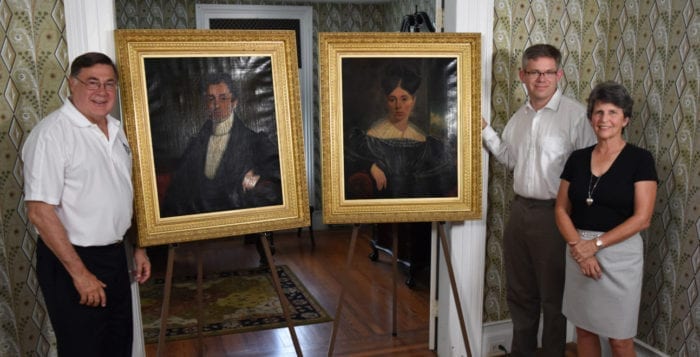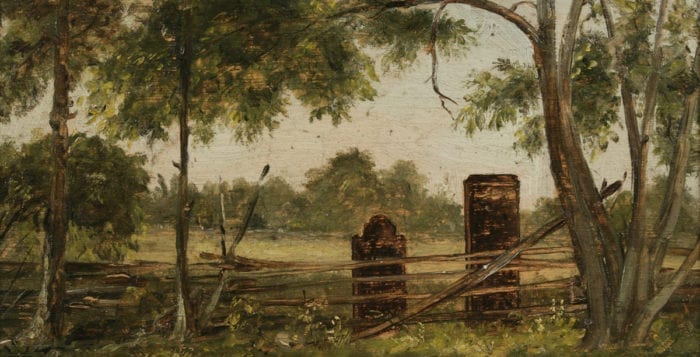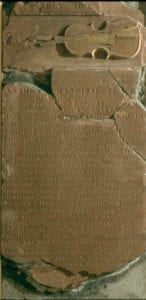On Aug. 7, Town of Brookhaven Supervisor Ed Romaine (R) and town historian Barbara Russell visited the Longwood Estate (circa 1790) in Ridge where they presented two historic paintings to Joshua Ruff, director of collections and interpretation at The Long Island Museum in Stony Brook, to be added to the museum’s collection as a long-term loan.
The portraits, painted by Shepard Alonzo Mount, were gifted to the town by Eleanor Smith of California. The subjects are William Sidney Smith (1796–1879) and his wife, Eleanor Jones Smith (1805–1884). A year after their marriage in 1823, the couple came to Longwood Estate and raised 10 children. William Smith served as Brookhaven Supervisor from 1829 to 1834.
“These pieces were donated to the Town of Brookhaven, they still belong to the Town of Brookhaven, but they are coming to the museum and will be stored in our collections to be used occasionally for exhibition purposes,” said Ruff in a recent phone interview. “We agreed in taking them as a long-term loan because we believe they really add to our holdings on Shepard Alonzo Mount.”
Painted in the early 1830s, the two portraits were displayed in the house on the property until the last Smith family owner, Eleanor Northrup Smith, sold the estate and moved to California in the late 1960s. The paintings have been stored in a warehouse since that time.
Albeit a loan, Ruff is thrilled to be able to add them to the museum’s current collection, which includes more than 25 of Shepard Alonzo Mount’s paintings and several hundred of his drawings and sketches, not to mention the enormous collection of paintings and drawings by his more famous younger brother, William Sidney Mount.
According to Ruff, these particular portraits are unique in that they precede the portrait paintings the museum has, which are from the later 1830s and 1840s. “They were done just when [Shepard] was starting to launch his career as a portrait artist. This was a phase of his career that we hadn’t really documented before. They are valuable in that sense to us,” he said. “They show him beginning to mature as an artist and improve in his skills.”







